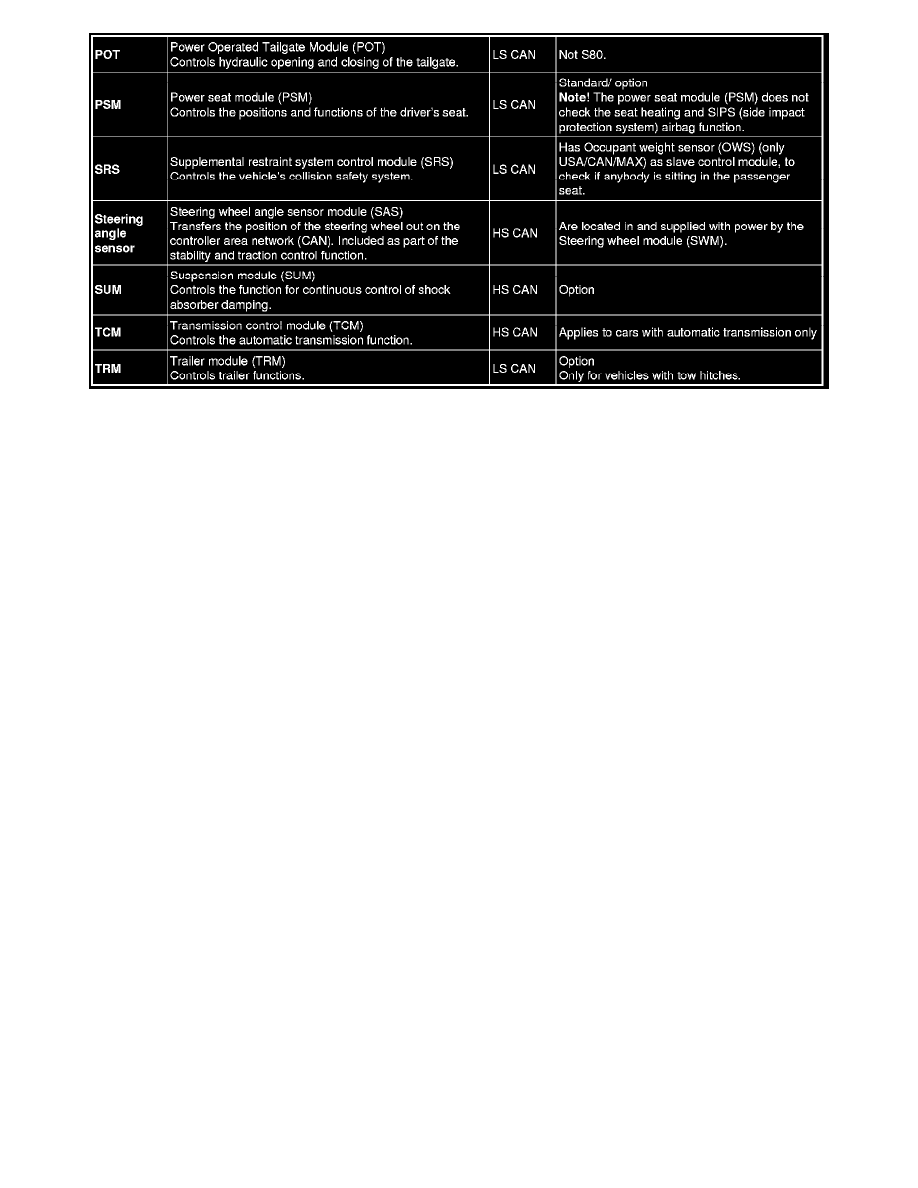XC60 FWD L6-3.2L VIN 96 B6324S2 (2010)

The Network
The network
General
Increasing demands for further functionality in the vehicle, both by statutory requirement and customers, have led to increased complexity in the vehicle.
This, in turn, has encouraged developments towards more flexible electrical systems. The controller area network (CAN) is a result of this research. The
network permits the transmission and receipt of a large number of different commands and messages on the same wiring. Every command or message
used to require a separate cable. Using networks has allowed functionality to be expanded without increasing the number of cables.
The number of commands and messages which can be handled on the network depends on factors such as the network speed and the length of the
message or command. The Volvo network which is based on a control area network (CAN), can transmit over 500 different signals and approximately
100 messages. These messages are also known as frames. Each message can contain several signals.
Advantages of a network
Easier to add further functions and install accessories.
Because the control modules in the network are already connected to each other and are easy to add more information to, all that is required is:
-
to connect the sensors to the nearest control module
-
to connect the controlled component to the nearest control module
-
Download software to the control module to modify the configuration.
The length of the wiring and the number of components which are introduced with the vehicle are less than previously.
An example of this is the addition of cruise control for the car.
Before the introduction of the network the installation of control modules, switches, vacuum pumps, vacuum servos, hoses and cable harnesses was
necessary.
With the network only the installation of a switch and the downloading of software which alters the configuration of the vehicle is required.
Easier to introduce logical functions.
Logical functions can be explained as "If this occurs then the following corrective action must be carried out". For example, the system is programmed
so that if a tail lamp is broken, a message is transmitted via the control area network (CAN) to the driver information module (DIM) to warn the driver.
All that is required to introduce a logical function is to change the programming of the affected control module - the central electronic module (CEM)
and driver information module (DIM) in the example above. Introduction of logic functions does not increase the number of components or cables.
Easy to adapt the system to customer and market requirements
The functions can be altered depending on the requirements/demands of the customer and market. An example of this could be fog tail lamps. Certain
markets use two fog tail lamps, others only use one on the driver's side. Previously it was required that different replacement parts were stored for
different markets. Now the same replacement part can be used for all markets, by changing the programming depending on the market.
A similar basic system can be used for a whole model program
Similar networks (hardware) can be used for a large number of different vehicles.
The only thing that differentiates the vehicles is:
-
the components (control modules, sensors controlled components etc.) which are connected to the system
-
Which components do what.
